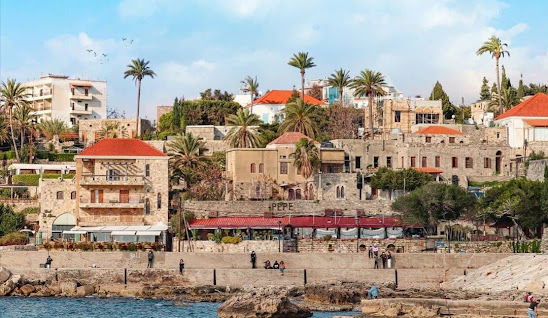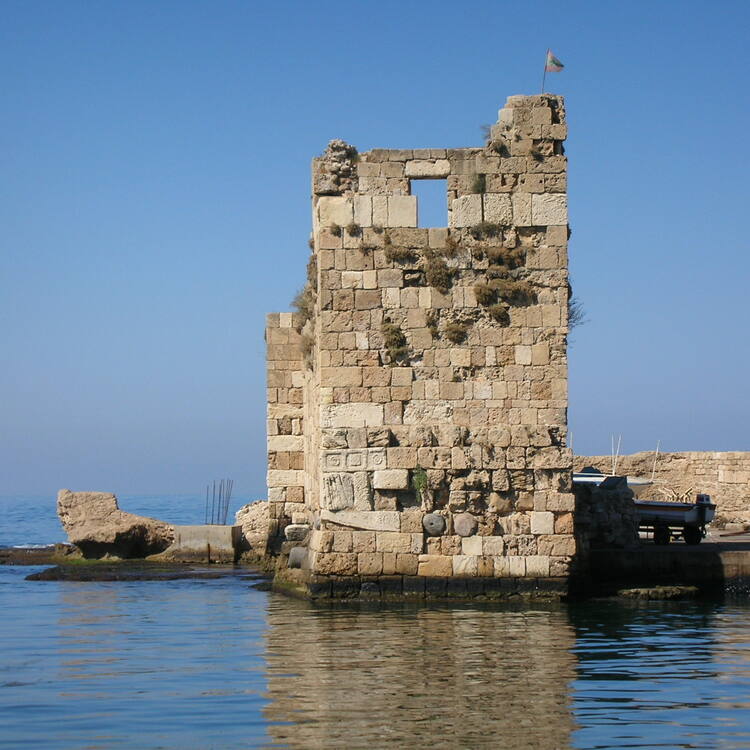Byblos
The ruins of many successive civilizations are found at Byblos, one of the oldest Phoenician cities. Inhabited since Neolithic times, it has been closely linked to the legends and history of the Mediterranean region for thousands of years. Byblos is also directly associated with the history and diffusion of the Phoenician alphabet.

Outstanding Universal Value
Brief synthesisThe coastal town of Byblos is located on a cliff of sandstone 40 km North of Beirut. Continuously inhabited since Neolithic times, Byblos bears outstanding witness to the beginnings of the Phoenician civilization. The evolution of the town is evident in the structures that are scattered around the site, dating from the different periods, including the medieval town intra-muros, and antique dwellings. Byblos is a testimony to a history of uninterrupted construction from the first settlement by a community of fishermen dating back 8000 years, through the first town buildings, the monumental temples of the Bronze Age, to the Persian fortifications, the Roman road, Byzantine churches, the Crusade citadel and the Medieval and Ottoman town. Byblos is also directly associated with the history and diffusion of the Phoenician alphabet. The origin of our contemporary alphabet was discovered in Byblos with the most ancient Phoenician inscription carved on the sarcophagus of Ahiram.
Criterion (iii): Byblos bears an exceptional testimony to the beginnings of Phoenician civilization.
Criterion (iv): Since the Bronze Age, Byblos provides one of the primary examples of urban organization in the Mediterranean world.
Criterion (vi): Byblos is directly and tangibly associated with the history of the diffusion of the Phoenician alphabet (on which humanity is still largely dependent today), with the inscriptions of Ahiram, Yehimilk, Elibaal and Shaphatbaal.
Integrity The inscribed property comprises Phoenician and Roman elements whilst the large protected zone requested by the World Heritage Committee covers the medieval town within the walls and the sector of the necropolis, and consequently many features are located beyond the boundaries. The ancient town of Byblos intra-muros possesses all the elements characterising a medieval town (wall, cathedral, castle and donjon), later modified as an Ottoman-type town (souqs, khans, mosque, houses). The strong urban pressure that threatens this Ottoman town has for the most part been contained thanks to national and international listing of this part of the town, but new developments around the port remain a threat. The archaeological sites are rendered very vulnerable through lack of consolidation work following excavations and many monuments are awaiting repair to avoid the risk of collapse, which has been the case of a wall located nearby the rampart.

AuthenticityThe authenticity of the archaeological elements is very vulnerable because the climatic conditions cause the erosion of some parts, reducing comprehension of what they represented. This phenomenon is a source for concern and more particularly as regards the mosaics.
Protection and management requirementsThe site is protected by the Lebanese Antiquities Law 133/1937 and law NO 166 of 1933. The town plan and of the listed zone is being implemented. The town intra-muros is inscribed on the national list of Historic Monuments. The conservation and management of the site of Byblos are ensured by the Directorate General of Antiquities (DGA). Targeted conservation projects are underway within the property. All restoration and other permits in the intra-muros zone must be submitted for approval to the DGA. As concerns construction permits, the same laws mentioned above are applicable not only within the site but also throughout the whole region of Byblos. The DGA retains the right to modify any construction project, depending upon the buried archaeological discovered during sounding operations, before granting a permit. Agreement with the Municipality and the local police force is required in order to counter, if need be, any illegal action on the part of the owner. A protection and enhancement plan for the site is being prepared to ensure a better presentation of these unique ruins and to develop a new protection system for the site while respecting international charters. Cooperation with specialists in the restoration of historic monuments is primordial. The plan should coordinate all those specializations involved in the property and also treat the subject of underwater remains.


